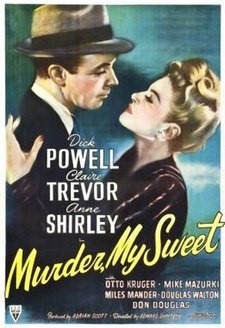Page last updated:
You may copy and use the photos here in your own publications as long as you give credit to the book as follows: Knights of Freedom by Lt. Col. Frederick C. Brems USAR (RET), published by Stackpole Books, Blue Ridge Summit, PA.

Photo 527 Page 231
Our CO looking down the dirt and grass airstrip while our driver walks toward the far end of the strip.
Photo 531 and 534 Page 232
One of our companions and I climbed into the bomber through the open bomb bay doors and worked our way up to the nose of the plane. The plane actually looked to be in pretty good shape, although it was certainly not airworthy.
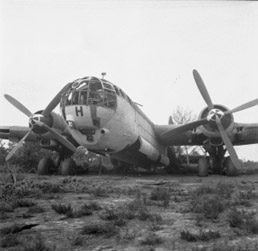
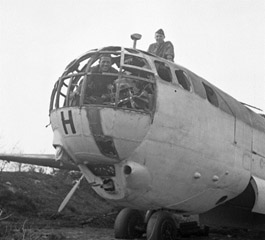
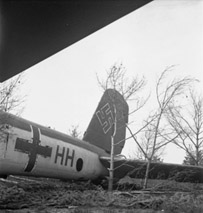
Photo 536 Page 233
The large tail of the He 177. We learned years later that all He 177 aircraft that survived the war were reduced to scrap by the end of the 1950s. There are no surviving examples. (FCB)
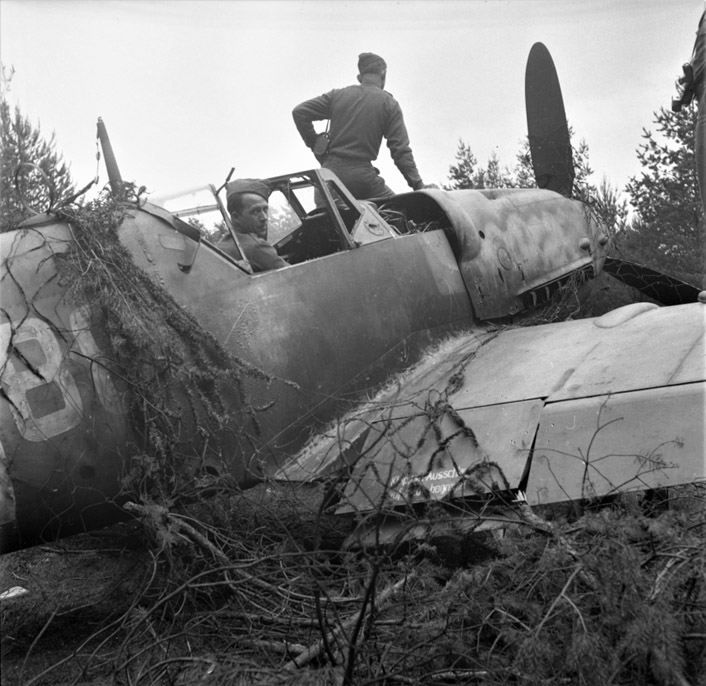
Photo 537 Page 233
A fairly intact Messerschmitt Bf 109 fighter plane.
I got right down into the cockpit.
Notice the strands of camouflage netting.
Photo 541 Page 234
A close-up from the side of the engine of the plane shown in the photo at the top right of page 234.

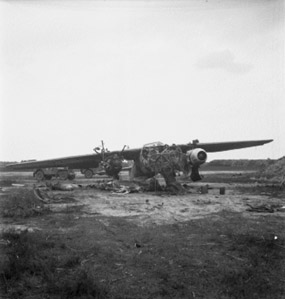
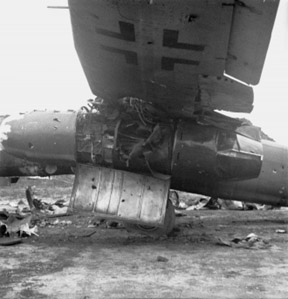

Photos 542, 543, 544, 545, 546, 547 Page 234
We drove right up to an Arado Ar 234 German Reconnaissance Jet Bomber; this was the world’s first operational jet bomber. However, it was employed primarily in reconnaissance missions. Allies found it nearly impossible to intercept the few times it was used as a bomber. Introduced in SEP1944, only 214 were produced. The last German Luftwaffe aircraft that flew over England was an Arado in APR1945. The sabotage seems to have been concentrated on the workings of the jet engine, including the firing of rifles and sub-machine guns at the engine. Notice bullet holes in the open hatch hanging below the engine, in the engine housing and on the fuselage of the plane itself. Also in one of the photos, see the revetment to the plane’s left. One of our jeeps was parked behind the plane. In photo 546, notice the two Jerry cans sitting to the right of the nose of the plane. Those cans could very well be evidence of sabotage, as the retreating Germans would have sought to burn and destroy critical parts of the planes to keep the technology from being captured. It did not appear that they had much gas to waste on these efforts. A surviving AR 234 B-2 is on display at the National Air and Space Museum’s Steven F. Udvar-Házy Center near Dulles International Airport, Washington, DC.
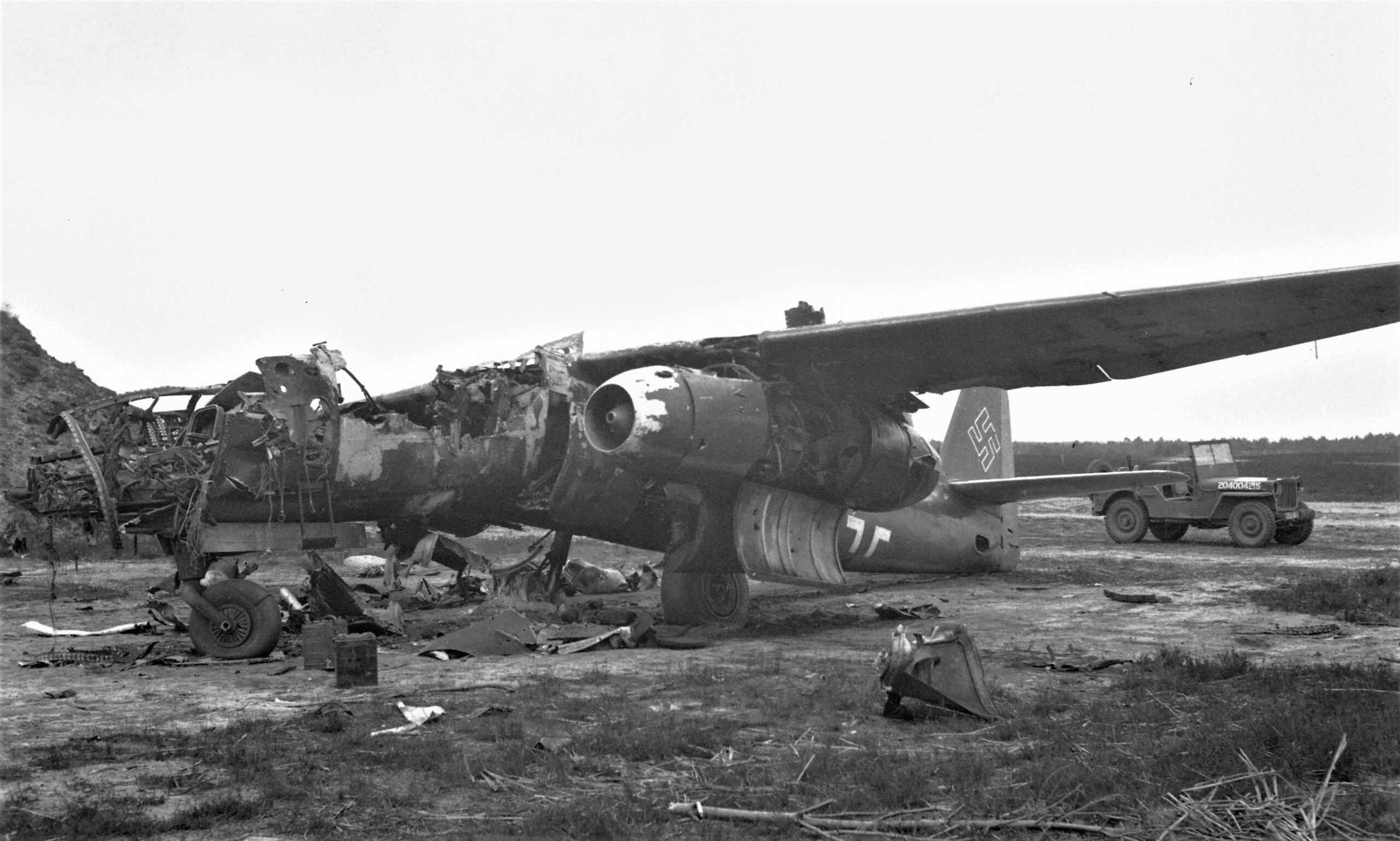

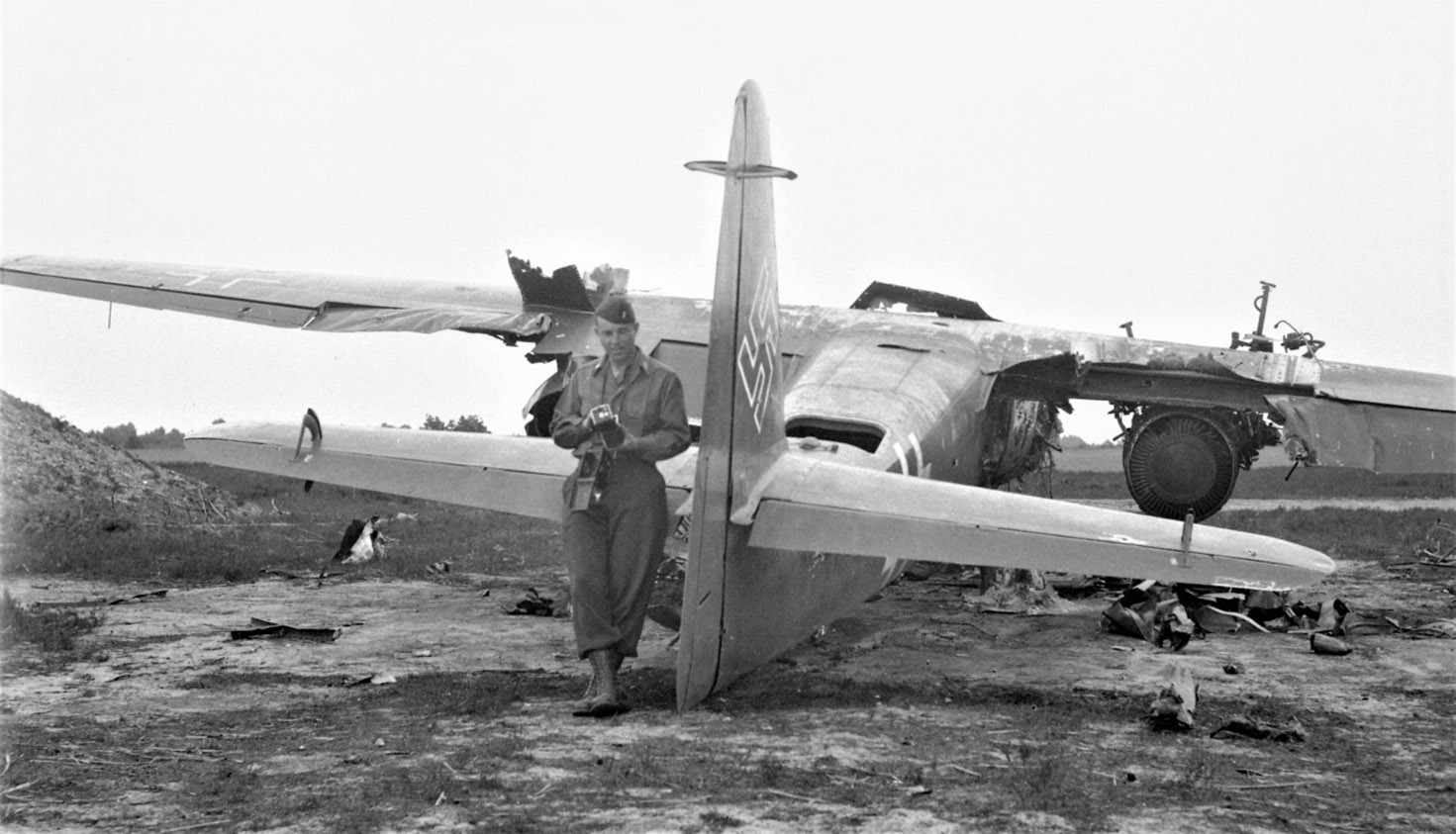
Photo 548 Page 234
Another destroyed Me 109.
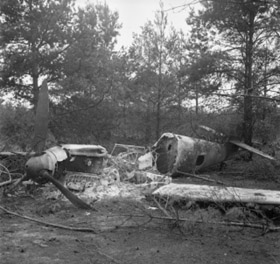

Photo 549 Page 234
The tail with two vertical stabilizers indicates that this is probably a Dornier D0-17 Light Bomber or some version of it.

Photo 550 Page 234
This aircraft was so thoroughly destroyed that we were unable to identify it. That is the author to the right.
Photos 551, 552 and 553 Page 234
Along this road are three unidentified aircraft on the left side. The second photo is of the first plane on the left taken from the rear of the aircraft while the third photo is a close-up of the two planes farther down the road.
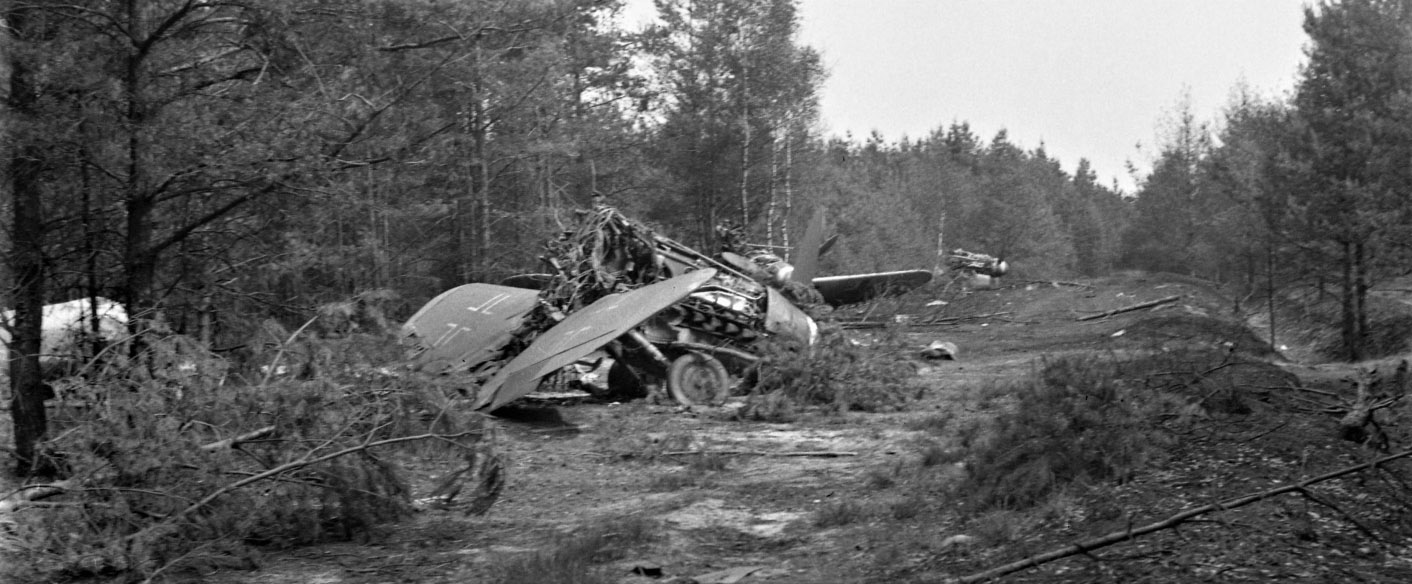

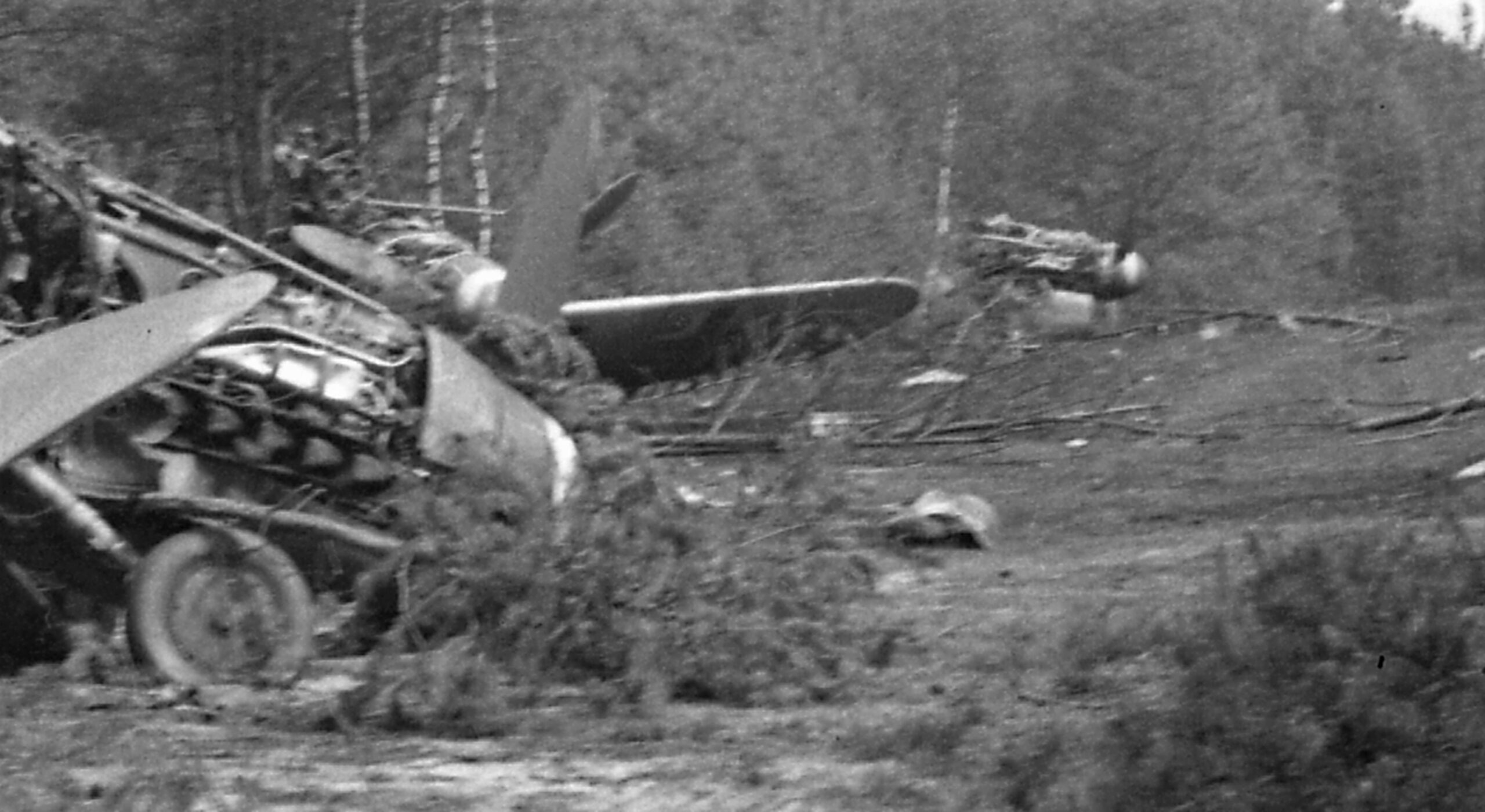
Photos 554 and 555 Page 234
The unique shape of the engine combined with the design of what remains of the cockpit make it likely that this is a Siebel-Si 204. The Si 204 was a small twin-engine transport and trainer aircraft first developed in 1938 in response to a Ministry of Aviation order for a small civil transport aircraft. It had a crew of two with room for eight passengers. It was eventually produced for the Luftwaffe as a trainer aircraft with a rounded glass cockpit. The remains of the frame of that cockpit are visible here. This version had the two-blade propeller. 1,216 were produced. An Si 204 was very possibly the last German aircraft shot down on the Western Front. At 8 pm on May 8, 1945, 2nd Lt. K. L. Smith of the 9th Air Force’s 474th Fighter Group, flying a P-38 Lightning, downed an Si 204 3 miles southeast of Rodach, Bavaria.


Photos 556 and 557 Page 234
Two more planes we were unable to identify.
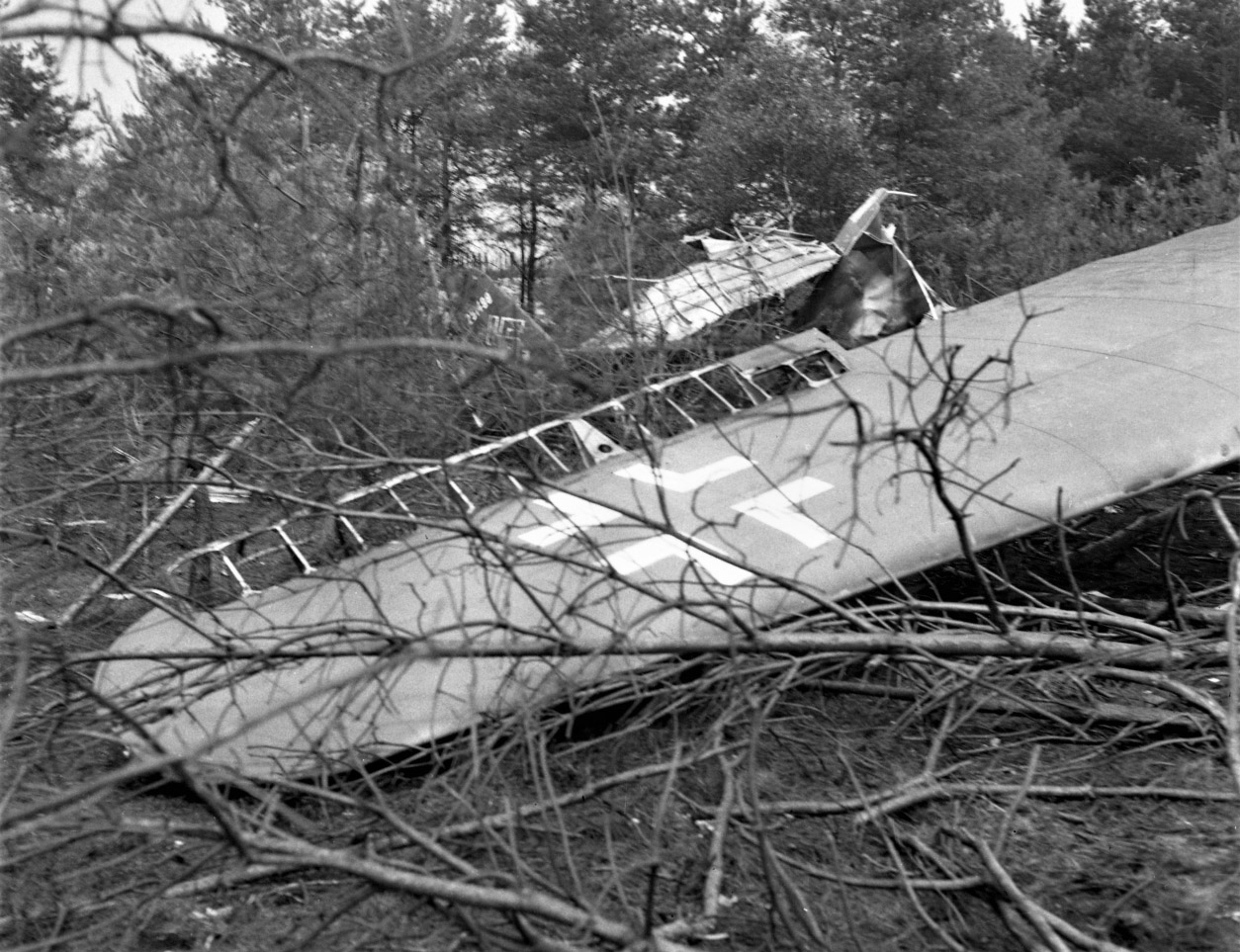

Photo 557A Page 234
We found a rare Junkers Ju 388 Störtebeker parked away from the trees. The Ju 388 had been designed for high-altitude operations in response to our high-flying B-29 bombers. To reach the B-29s, the Ju 388s featured a pressurized cockpit. However, it made its appearance in late 1944, too late to have an impact. It is estimated that only about 100 were produced. This and the He 177 were probably the most noteworthy planes we encountered, maybe because they were in the best condition.

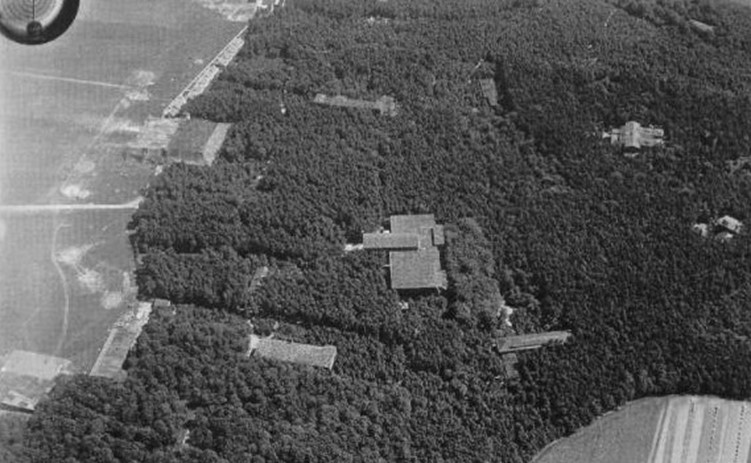
Photo 558
Description is on Page 235.
Photo 561
Poster for the movie Murder My Sweet.
